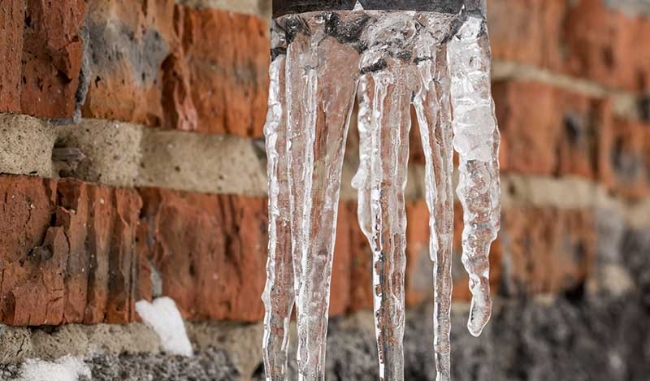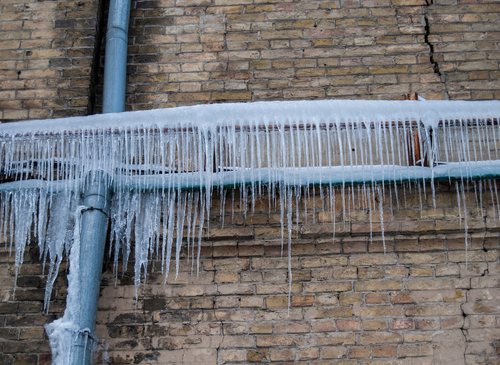We've unearthed this post on 6 Ways to Prevent Frozen Pipes listed below on the net and decided it made good sense to share it with you over here.

Winter can wreak havoc on your pipes, particularly by freezing pipelines. Right here's exactly how to stop it from occurring and what to do if it does.
Intro
As temperature levels drop, the danger of icy pipes increases, potentially bring about pricey repairs and water damages. Comprehending just how to avoid icy pipes is vital for home owners in cold climates.
Prevention Tips
Protecting susceptible pipes
Wrap pipes in insulation sleeves or use heat tape to secure them from freezing temperature levels. Concentrate on pipes in unheated or outside locations of the home.
Home heating strategies
Maintain indoor areas properly warmed, specifically areas with plumbing. Open up cupboard doors to enable warm air to circulate around pipelines under sinks.
How to determine icy pipes
Seek decreased water circulation from taps, uncommon smells or noises from pipes, and visible frost on exposed pipes.
Long-Term Solutions
Structural adjustments
Take into consideration rerouting pipes away from exterior wall surfaces or unheated locations. Include added insulation to attic rooms, basements, and crawl spaces.
Upgrading insulation
Purchase top notch insulation for pipes, attics, and walls. Appropriate insulation aids maintain regular temperatures and reduces the threat of icy pipelines.
Safeguarding Outdoor Plumbing
Garden pipes and outside faucets
Separate and drain yard hoses prior to winter season. Install frost-proof spigots or cover outdoor taps with shielded caps.
Recognizing Frozen Pipes
What triggers pipes to ice up?
Pipes ice up when exposed to temperatures listed below 32 ° F (0 ° C) for expanded periods. As water inside the pipes freezes, it broadens, putting pressure on the pipeline walls and possibly causing them to rupture.
Threats and problems
Frozen pipes can lead to water supply interruptions, home damages, and expensive repair work. Ruptured pipelines can flood homes and cause substantial structural damages.
Indications of Frozen Water Lines
Recognizing frozen pipes early can prevent them from rupturing.
What to Do If Your Pipes Freeze
Immediate activities to take
If you presume icy pipelines, keep taps open up to alleviate stress as the ice thaws. Utilize a hairdryer or towels soaked in hot water to thaw pipes slowly.
Final thought
Stopping frozen pipelines calls for proactive actions and fast responses. By understanding the causes, indications, and safety nets, homeowners can secure their plumbing throughout winter.
6 Proven Ways to Prevent Frozen Pipes and Protect Your Home
Disconnect and Drain Garden Hoses
Before winter arrives, start by disconnecting your garden hoses and draining any remaining water. Close the shut-off valves that supply outdoor hose bibs and leave the outdoor faucet open to allow any residual water to drain. For extra protection, consider using faucet covers throughout the colder months. It’s also important to drain water from any sprinkler supply lines following the manufacturer’s directions.
Insulate Exposed Pipes
Insulating your pipes is an effective way to prevent freezing. Pipe insulation is readily available at home improvement stores and is relatively inexpensive. Pay close attention to pipes in unheated areas such as the attic, basement, crawl spaces, or garage. Apply foam insulation generously to create a buffer against the cold. You can also wrap your pipes in heat tape or thermostat-controlled heat cables for added warmth.
Seal Air Leaks
Inspect your home for any cracks or openings that could let in cold air. Seal any holes around the piping in interior or exterior walls, as well as the sill plates where your home rests on its foundation. Additionally, make sure to keep your garage door closed unless you’re entering or exiting. Leaving it open creates a significant air leak that can lead to frozen pipes.
Allow Warm Air Circulation
During cold snaps, it’s essential to allow warm air to circulate evenly throughout your home. Leave interior doors ajar to promote better airflow. Open kitchen and bathroom cabinets to help distribute heat consistently around the rooms. If you have small children or pets, be sure to remove any household chemicals or potentially harmful cleaners from open cabinets for safety.
Let Faucets Drip
A small trickle of water can make a big difference in preventing ice formation inside your pipes. When temperatures drop significantly, start a drip of water from all faucets served by exposed pipes. This continuous flow helps prevent the water from freezing. Additionally, running a few faucets slightly can relieve pressure inside the pipes, reducing the chances of a rupture if the water inside does freeze.
https://choateshvac.com/6-proven-ways-to-prevent-frozen-pipes-and-protect-your-home/

Do you enjoy reading about How To Avoid Freezing Pipes? Create a remark below. We will be delighted to listen to your insights about this posting. In hopes that you visit us again before long. In case you liked our article plz make sure you remember to pass it around. Thank you for your time. Come back soon.
Book Maintenance